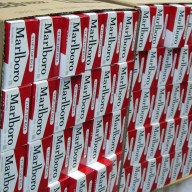The Waverley/Fall River area has been occupied by Mi’kmaq for thousands of years. The lakes and rivers formed a critical part of the water highways connecting communities across what is now Nova Scotia.
When European settlers arrived, Waverley slowly grew into a settlement of 20 farm houses until it literally struck gold in the mid-1800s.
Within eight years, 2,000 people had flooded the hamlet seeking their fortune.
Even the local Anglican church, built in 1861, eventually picked itself up and waddled down the road to be at the centre of the action.
By the end of the century, the village was hoping with 138 shafts sunk into the glittering earth. The area yielded 72,566 ounces of gold between 1862 and 1940, writer Mike Parker notes in Gold Rush: Ghost Towns of Nova Scotia.
Dogged by a dark side of violence and booze, it was a border town full of transient people mauling the earth for the yellow metal.
Waverley still holds Gold Rush days in September, but things have quietened down. The Rocky Lake Drive church was desanctified in 1991 and turned into a museum.
Annie Smith founded the Waverley Heritage Museum and still oversees its collection of old photographs, tools, golden souvenirs and antique furniture.
Her grandfather was one of the original gold hunters, C.P. Allen, whose name lives on in a local school.
“I was christened here and brought up here,” she says. “It was very sad when they closed (the church), but perhaps they were tears of joy, because it’s still my church.”
Fall River, just a few kilometres west of Waverley, was founded in the late 1700s by mostly German families.
Its people historically made a living working the lakes, using mills to convert their energy into electricity to power furniture factories.
While it had a long, sleepy period as Waverley exploded and contracted with the gold rush, it has steadily grown in size in recent years, making the most of its country setting near Highway 102 to attract people who work in Halifax or at the Halifax airport.
A strip mall and grocery store cemented its place as the current hub of the area.
















